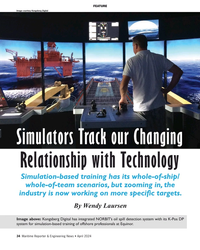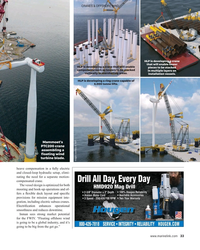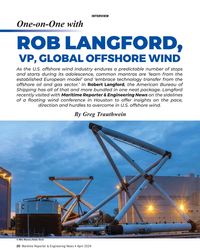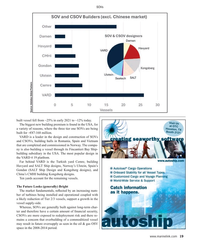Ton Oil Tanker
-
- Piracy Hits New Heights Maritime Reporter, Jun 2001 #95
Pirate attacks rose 57 percent in 2000, and were nearly four and a half times higher when compared with 1991 according to a report by the ICC's International Maritime Bureau (1MB). In its annual Piracy and Armed Robbery Against Ships report for 2000, the 1MB — a division of the Paris-based International Chamber of Commerce (ICC) — reports a total of 469 attacks on ships either at sea, at anchor or in port.
The violence used in the attacks also rose to new levels, with 72 seafarers killed and 99 injured in 2000, up from three killed and 24 injured the previous year. The number of hostages taken halved to 202 seafarers.
Ships were boarded in 307 instances, and a total of eight ships were hijacked.
The figures, compiled by the 1MB for January to December 2000, show an alarming rise in piracy and armed robbery in Indonesia, Bangladesh, the Malacca Straits, India, Ecuador and the Red Sea. Indonesia recorded the highest number of attacks, accounting for almost one quarter of the world total with 119 incidents.
Eighty-six ships were boarded, two ships were hijacked and attempted attacks were made on another 31 ships. It was also the location where the greatest violence was experienced, with many of the pirates armed with knives. The 1MB says there are no signs that the number of attacks will drop unless Indonesia takes serious steps to address the problem.
Amongst other world hotspots, the Malacca Straits witnessed a dramatic rise in attacks, up to 75 from 2 in 1999, despite the efforts of the Royal Malaysian Police to step up patrols in the area to tackle the problem. Its special task force captured two groups of pirates, but there are still known to be several other groups attacking and robbing ships as they transit this busy waterway, where the threat of an ecological catastrophe cannot be ignored.
Third place in the 2000 table goes to Bangladesh, with 55 attacks, up from 25 attacks in 1999. The Bangladeshi authorities have since taken action of their own, which resulted in a drop in attacks during the latter part of the year. Other substantial rises were recorded in India (35, up from 14 in 1999), Ecuador (13, up from two in 1999), and 13 attempted boardings on ships in the southern part of the Red Sea, where previously there had been no pirate activity.
One of the few areas to see a downturn in activity was the Singapore Straits (five incidents, down from 14). The annual report also draws attention to IMB's recent initiative to take the fight against piracy onto the Internet with weekly updates of attacks and warnings. The service, which has been well received in the shipping world, is compiled from daily status bulletins broadcast via satellite from the 1MB Piracy Reporting Center in Kuala Lumpur.
Posting the information on the Internet means shipowners and land-based authorities are able to access the updates as well as ships at sea. The address for the weekly report is www.icc-ccs.org Piracy Attacks Surge On Tankers Piracy attacks on oil tankers surged to unprecedented levels during the first quarter of 2001, reinforcing fears that the onslaught will sooner or later result in ecological catastrophe. There has been an increase in the number of tankers attacked, Jayant Abhyankar, deputy director of piracy investigator the International Maritime Bureau (1MB) said. "Before it was mostly bulk-carriers." Nearly half of the 56 cargo ships attacked in the first quarter of the year were tankers, compared to 28 percent in last year's first quarter, according to the IMB's latest report.
Abhyankar warned that pirate attacks on tankers in Asia's crowded shipping lanes were a growing threat to navigation. The problem was recently illustrated on March 19 by an attack on the 3,000-ton oil tanker Matsumi Maru as it steamed through the Malacca Straits.
The pirates took the duty second officer, and other crew members hostage, reads an account of the attack.
They then tried to take another officer hostage, but he resisted and managed to grab a knife and torch from one of the pirates.
Tankers were the target of 30 percent of pirate attacks across the whole of last year, and the 1MB said it feared that an equal number of attacks go unreported. Petroleum product tankers have proven to be a key target with their valuable cargoes of diesel and gasoline, which can easily be sold on the black market.
Anti-Piracy Life-Jacket Developed An armored lifejacket, designed to protect sailors in case of pirate attacks was developed last year. The jacket conforms to International Maritime Organization standards for life vests and has integral knife and bullet resistance. Weighing 3.5kg, the Lorica Armored Lifevest has body armor encased in a high tensile polymer fabric that combines inherent buoyancy and water resistance with stab and bulletproofing. It is currently being tested by the German customs service in the Baltic and has already been ordered by police in Thailand.
-
- Evolving Threats Met by Market Innovation Maritime Logistics Professional, Q3 2014 #42
other parties involved. In this case, a vessel carrying fourteen hijackers armed with AK-47 assault rifles and knives approached the 73,400 deadweight ton oil tanker, which was in the process of carrying out two ship-to-ship transfers off Abidjan with 30,000 tons of gas oil on board. Before the second operation
-
- BOOM TIMES FOR KOREAN SHIPBUILDING Maritime Reporter, May 1992 #30
but also enhanced profitability. Current ship prices are higher than in 1981, when prices were at an alltime high. In the case of a 250,000- ton oil tanker, for instance, the price is about $100 million, compared to $47 million in 1985. While the price of a 70,000-ton bulk carrier rose to more
-
 )
March 2024 - Marine Technology Reporter page: 42
)
March 2024 - Marine Technology Reporter page: 42NEW TECH OCEANOLOGY INTERNATIONAL 2024 Image courtesy Greg Trauthwein Image courtesy BIRNS MacArtney launches the new ultra-compact ø12.7 mm SubConn Nano connector. Innovative connectivity built on 45 years of ? eld-proven and market-trusted design. Image courtesy MacArtney Birns celebrated its 70th
-
 )
March 2024 - Marine Technology Reporter page: 39
)
March 2024 - Marine Technology Reporter page: 39Photo courtesy Global Ocean Design Figure 7 A 35Ah AGM lead-acid battery is tested using the West Mountain Radio CBA to show the effect of simply ? lling the battery voids with mineral oil as a compensating ? uid. The CBA is programmed to cut-off at a voltage of 10.50v. The top line (red) shows the
-
 )
March 2024 - Marine Technology Reporter page: 36
)
March 2024 - Marine Technology Reporter page: 36LANDER LAB #10 Of special interest for marine applications, LiPo batteries are Shipping any kind of lithium battery can be a challenge, and offered in a “pouch” design, with a soft, ? at body. The pouch IATA regs vary with the batteries inside or outside an instru- is vacuum-sealed, with all voids ?
-
 )
March 2024 - Marine Technology Reporter page: 35
)
March 2024 - Marine Technology Reporter page: 35Figure 1 A self-righting vehicle design with buoyancy high and weight low, WHOI’s SeaBED AUV captures the attention of a pair of curious Antarctic penguins as it is deployed from the British research vessel James Clark Ross. Vehicle designers allowed for temperature reduction of battery capacity. Recharge
-
 )
March 2024 - Marine Technology Reporter page: 33
)
March 2024 - Marine Technology Reporter page: 33success depends on many factors, not least a predictable OPEX. Over the past four years, SMD has worked with Oil States Industries to calculate cost per tonne ? gures for prospective customers. Patania II uses jet water pumps to Oil States’ Merlin riser systems were lift nodules into a collection drum
-
 )
March 2024 - Marine Technology Reporter page: 32
)
March 2024 - Marine Technology Reporter page: 32. Paci? c Metals Corporation of Japan for a feasibility study on The company’s SMD Q-Collector range is available in a vari- processing 1.3 million tonnes of wet nodules per year, and the ety of sizes to suit vessel and client requirements. Engineered company is also exploring opportunities for the
-
 )
March 2024 - Marine Technology Reporter page: 30
)
March 2024 - Marine Technology Reporter page: 30Barron. In-? eld collection system tri- height signi? cant. The physical connection and disconnection als conducted in 2022 where TMC collected 3,000 tonnes of between collector and power umbilical is performed subsea, nodules have helped further advance the design. and the LARS is ? tted with a routing
-
 )
March 2024 - Marine Technology Reporter page: 25
)
March 2024 - Marine Technology Reporter page: 25against samples gathered by RV Tanga- NIWA statement from November 2022. that couples into the water column.” roa outside the caldera.” In all, Maxlimer Tonga’s severed domestic internet cable mapped more than 800 km2 and travelled was buried under 30 m of ash and sedi- TESMaP Makes it Mark 1331 nautical
-
 )
April 2024 - Maritime Reporter and Engineering News page: 47
)
April 2024 - Maritime Reporter and Engineering News page: 47MARKETPLACE Products & Services www.MaritimeEquipment.com Powering the fleet for 60 years! HYDRAULIC NOISE, SHOCK AND VIBRATION SUPPRESSOR Noise, Shock, VibraO on & PulsaO on in Quiet, Smooth Flow Out Oil Bladder Nitrogen (blue) Manufactured by MER
-
 )
April 2024 - Maritime Reporter and Engineering News page: 42
)
April 2024 - Maritime Reporter and Engineering News page: 42& Ports Head of Regula- transporting goods, whether considered eters, for example: a seafarer acting in full tory & Public Affairs, Eero Lehtovaara tons per mile or emissions per ton-mile. compliance with training requirements has carved out an unusual - and possibly However, assuming that a miracle
-
 )
April 2024 - Maritime Reporter and Engineering News page: 41
)
April 2024 - Maritime Reporter and Engineering News page: 41Nautel provides innovative, industry-leading solutions speci? cally designed for use in harsh maritime environments: • GMDSS/NAVTEX/NAVDAT coastal surveillance and transmission systems • Offshore NDB non-directional radio beacon systems for oil platform, support vessel & wind farm applications
-
 )
April 2024 - Maritime Reporter and Engineering News page: 39
)
April 2024 - Maritime Reporter and Engineering News page: 39terminal consists of a ? oating stationary barge fuel for shipping. With ammonia’s potential to fully decar- with a capacity of 1000 cubic meters, or 650 tons, of am- bonize the maritime sector, the companies plan to roll out a monia. The permit allows for up to 416 operations annually, network of terminals
-
 )
April 2024 - Maritime Reporter and Engineering News page: 38
)
April 2024 - Maritime Reporter and Engineering News page: 38Tech Files Latest Products, Systems and Ship Designs Zero-Emission Mooring Service of a Tanker Consulmar achieved a milestone by executing what it calls ing boat Castalia, which operates on full electric propulsion. the world's ? rst zero-emissions mooring service for a tanker. Equipped with two 150 kW
-
 )
April 2024 - Maritime Reporter and Engineering News page: 35
)
April 2024 - Maritime Reporter and Engineering News page: 35SIMULATION e have a close relationship with tech- Realism is prized beyond immersive, photo-realistic visu- nology, evidenced by, for example, als, and providers are introducing increasingly accurate func- the phones we are estimated to un- tionality. FORCE Technology’s upcoming DEN-Mark2 math- lock around
-
 )
April 2024 - Maritime Reporter and Engineering News page: 34
)
April 2024 - Maritime Reporter and Engineering News page: 34FEATURE Image courtesy Kongsberg Digital Simulators Track our Changing Relationship with Technology Simulation-based training has its whole-of-ship/ whole-of-team scenarios, but zooming in, the industry is now working on more speci? c targets. By Wendy Laursen Image above: Kongsberg Digital has integrated
-
 )
April 2024 - Maritime Reporter and Engineering News page: 33
)
April 2024 - Maritime Reporter and Engineering News page: 33as towers to be stacked in multiple layers on vertically in marshalling areas. installation vessels. HLP is developing a ring crane capable of 6,000 tonne lifts. Mammoet’s PTC200 crane assembling a ? oating wind turbine blade. Images courtesy of HLP heave compensation in a fully electric and
-
 )
April 2024 - Maritime Reporter and Engineering News page: 32
)
April 2024 - Maritime Reporter and Engineering News page: 32FEATURE A closeup of a blade installation process taken via drone. A blade handling system is apparent (in yellow). Images courtesy of Mammoet requirement for the development of these cranes, particularly ling area. This would result in a major time and fuel saving. in ? oating offshore wind,” says
-
 )
April 2024 - Maritime Reporter and Engineering News page: 28
)
April 2024 - Maritime Reporter and Engineering News page: 28an underway replenishment at sea in the Atlantic Ocean, July 17. leum products to our storage and distri- bution sites around the world. The MSC The San Antonio-class amphibious transport dock ship USS Arlington (LPD contracting team and the skill set of con- 24) sails alongside the Henry J. Kaiser-class
-
 )
April 2024 - Maritime Reporter and Engineering News page: 25
)
April 2024 - Maritime Reporter and Engineering News page: 25RADM PHILIP SOBECK, MILITARY SEALIFT COMMAND Photo by Brian Suriani USN Military Sealift Command From a global supply chain perspective, What makes MSC so vital to the we’ve learned a lot about dealing with Navy’s ? eet and our military disruptions. COVID delivered a big forces around the world? wake-up
-
 )
April 2024 - Maritime Reporter and Engineering News page: 21
)
April 2024 - Maritime Reporter and Engineering News page: 21Orleans to work on Gulf of Mexico deepwater developers and approval regime,” said Langford. “However, projects with Shell. Eventually he settled in Houston, working we are gung ho about making this happen, and we are con? - with engineering and advisory/EPC companies for offshore dent that the offshore
-
 )
April 2024 - Maritime Reporter and Engineering News page: 20
)
April 2024 - Maritime Reporter and Engineering News page: 20bundled in one neat package. Langford recently visited with Maritime Reporter & Engineering News on the sidelines of a ? oating wind conference in Houston to offer insights on the pace, direction and hurdles to overcome in U.S. offshore wind. By Greg Trauthwein © Mike Mareen/Adobe Stock 20 Maritime Reporter
-
 )
April 2024 - Maritime Reporter and Engineering News page: 19
)
April 2024 - Maritime Reporter and Engineering News page: 19Global Partners built vessel fell from ~25% in early 2021 to ~12% today. Visit Us The biggest new building premium is found in the USA, for at OTC Houston, TX a variety of reasons, where the three tier one SOVs are being Booth 2121 built for ~€87-168 million. VARD is a leader in the design and construction
-
 )
April 2024 - Maritime Reporter and Engineering News page: 18
)
April 2024 - Maritime Reporter and Engineering News page: 18MARKETS & gas activity returns, we anticipate that supply of the vessels The Question of Emissions to offshore wind projects will reduce, driving demand for ad- Given that SOVs and CSOVs operate in a segment target- ditional CSOVs. ing reduced emissions, and many operate in the North Eu- Outside of China
-
 )
April 2024 - Maritime Reporter and Engineering News page: 17
)
April 2024 - Maritime Reporter and Engineering News page: 17SOVs China, we do not look at demand for SOVs/CSOVs as having a linear rela- tionship to the number of wind farms or turbines installed. We look to see where a large number of wind turbines are concentrated in relatively close proximity, generally in a very large wind farm or in a project cluster
